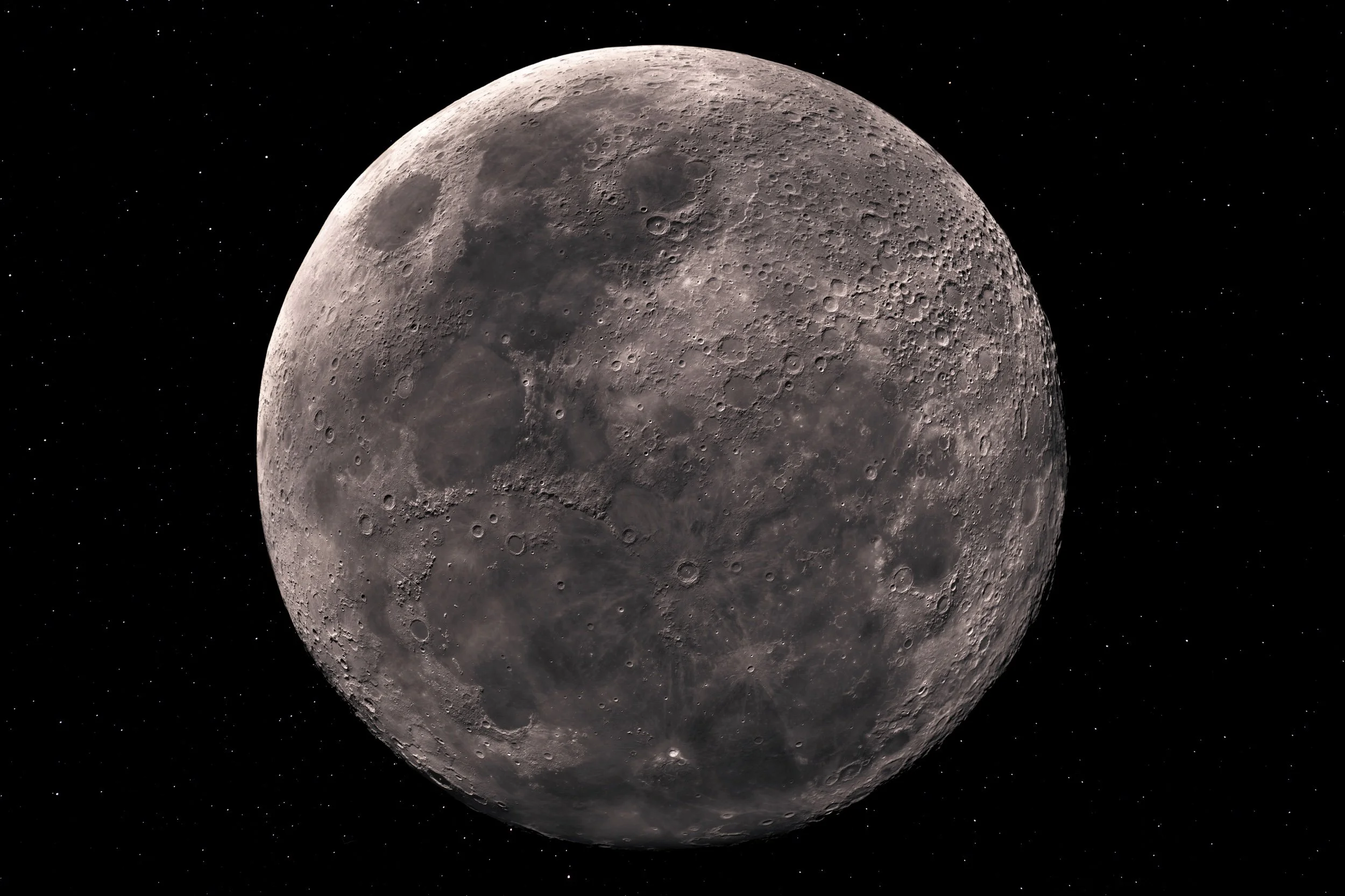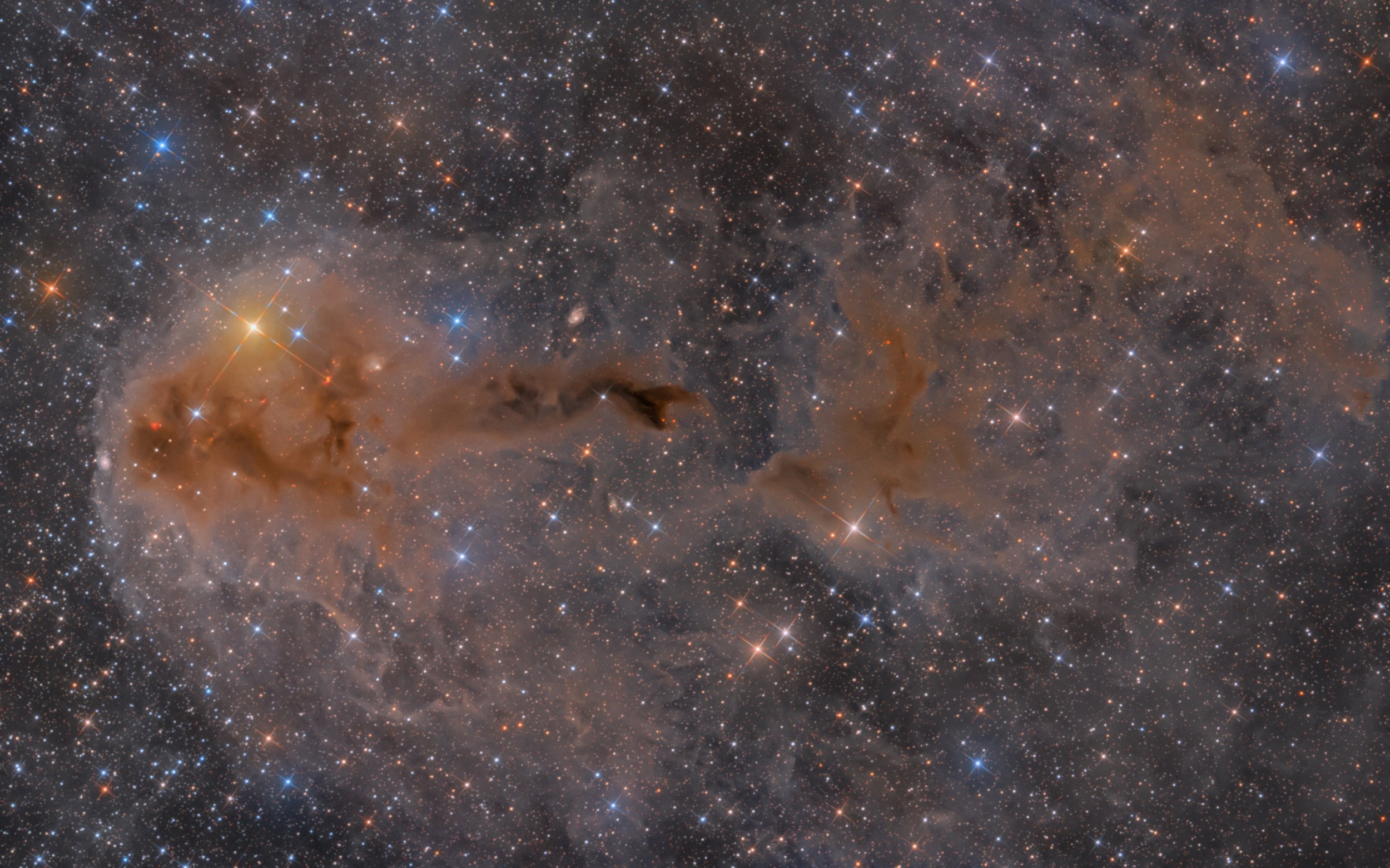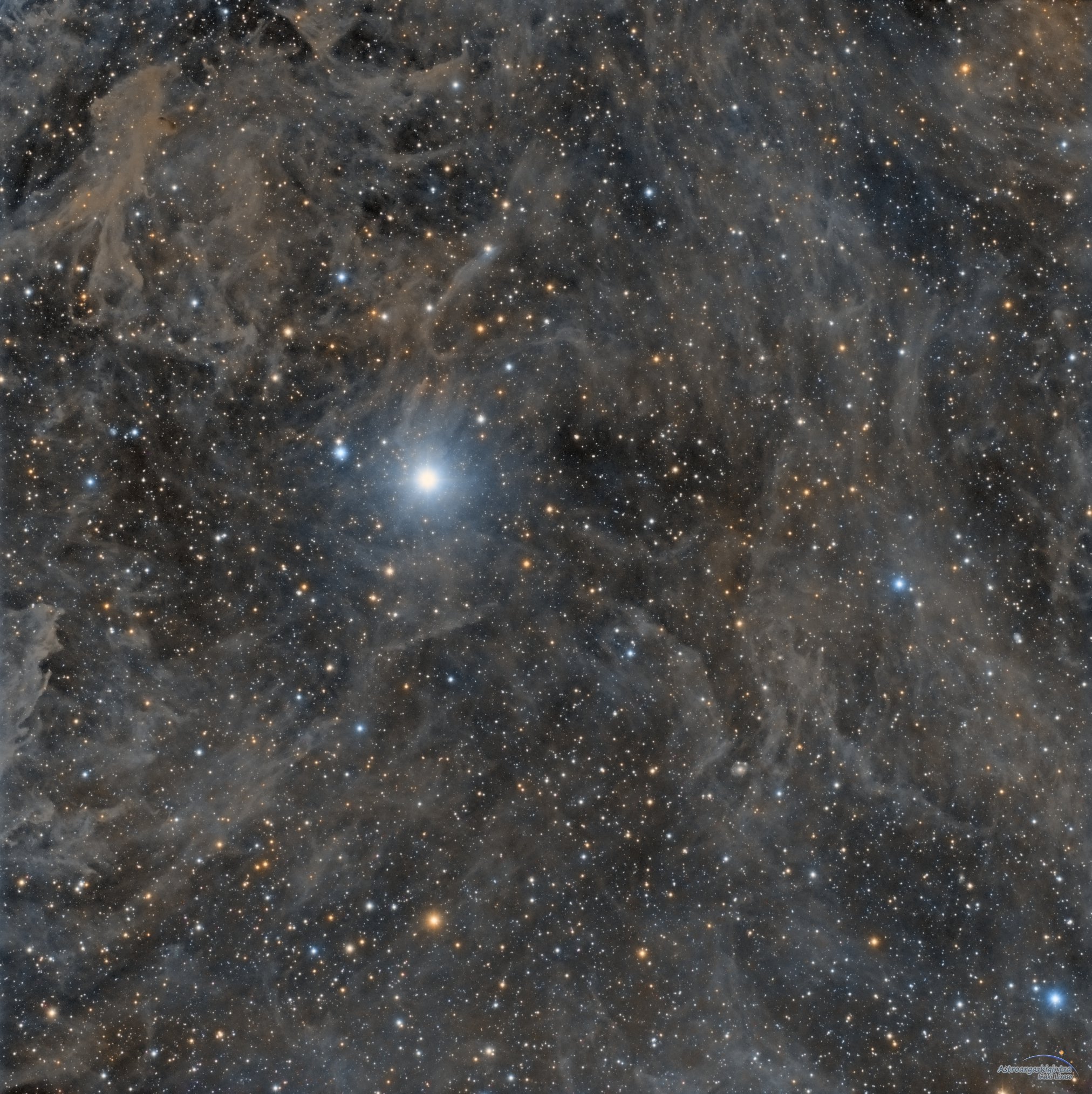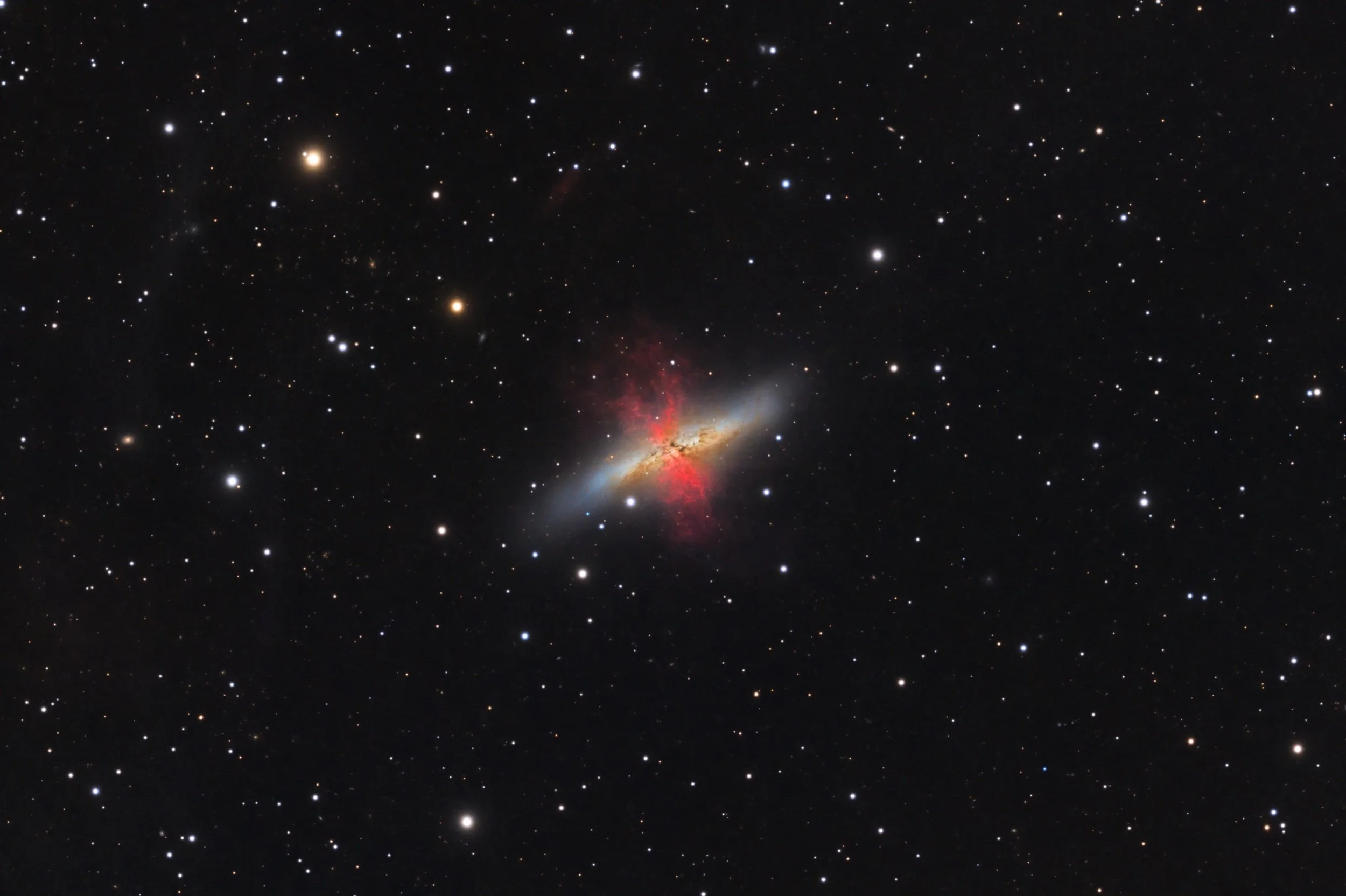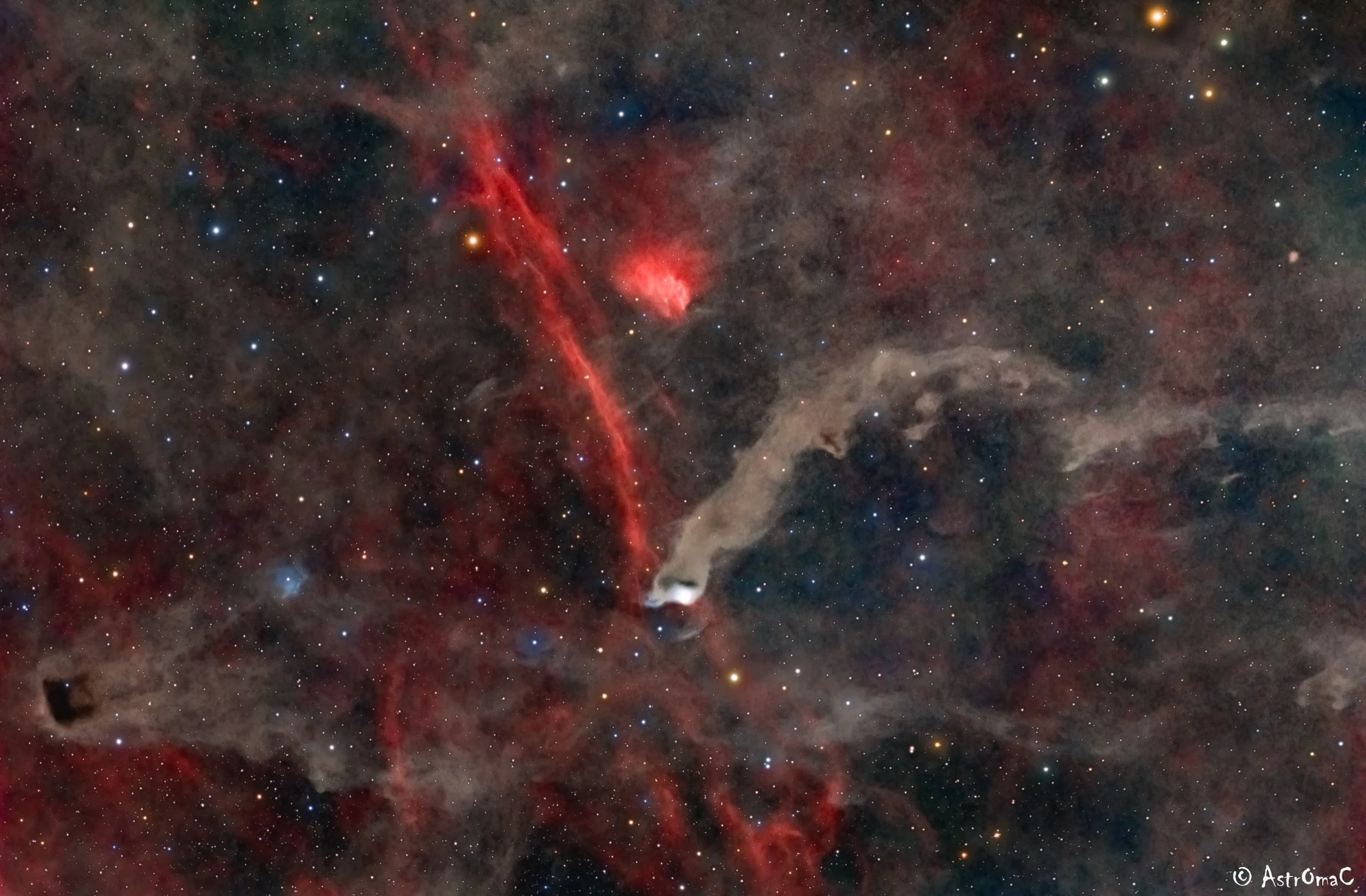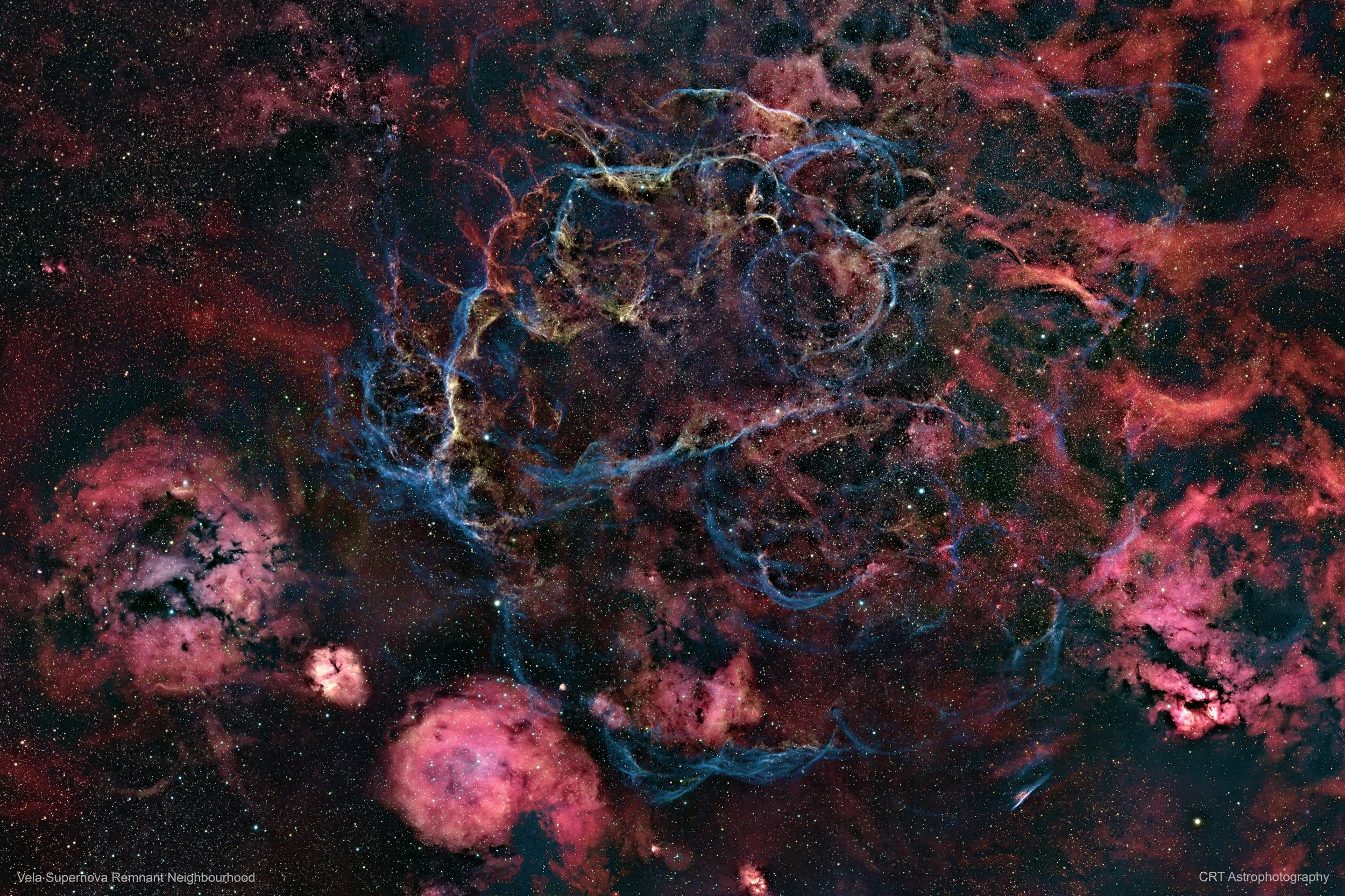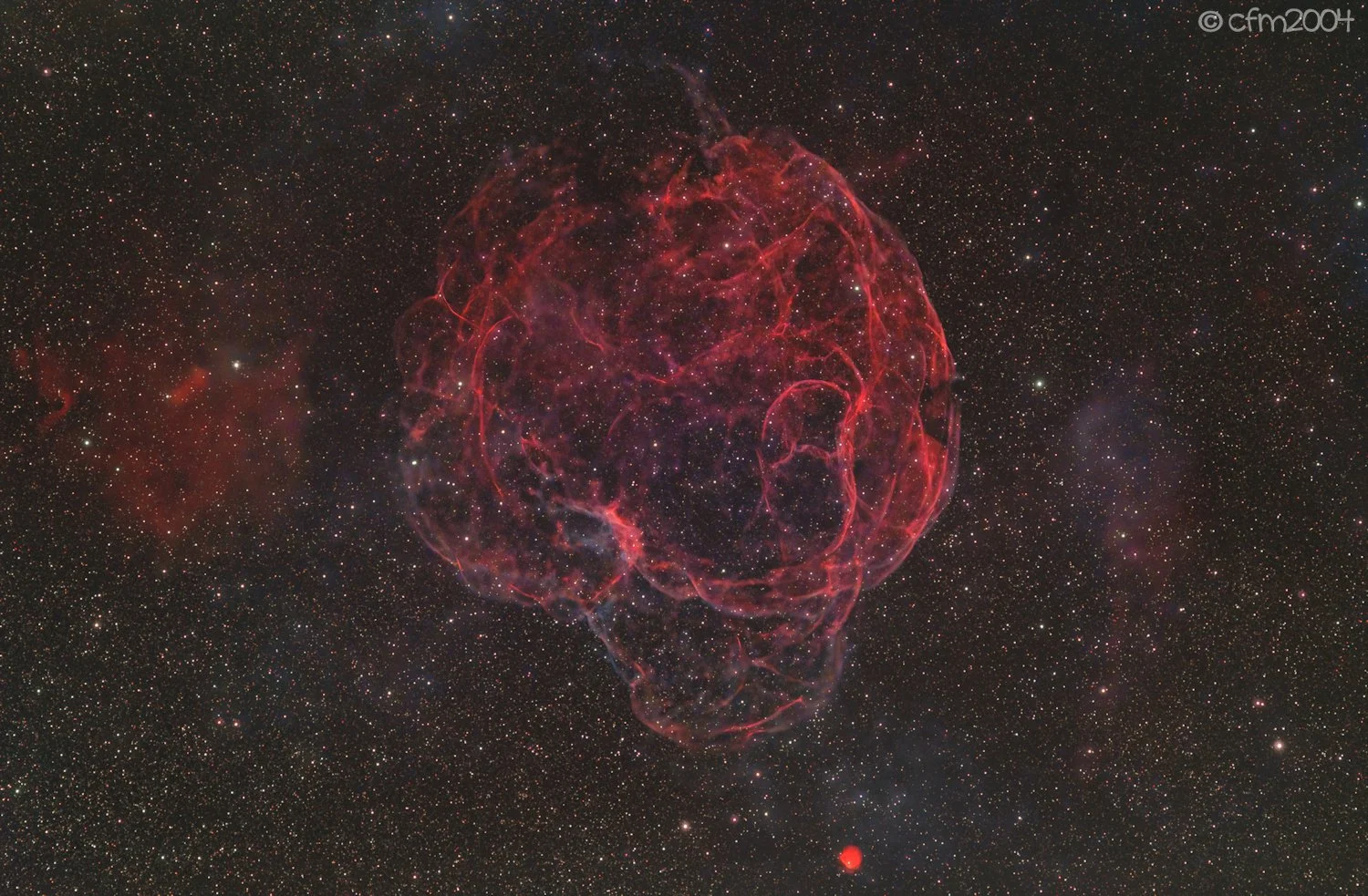
AAPOD2 Image Archives
Is this close enough for you?
Image Description and Details : This ultra high resolution of the full moon was constructed using a total of 1530 individual photos captured during all consecutive phases of the moon from new moon to full. The resulting single image measures a whopping 165,000 megapixels, (50,000 x 33.000 pixels).
The assembly of the final images took over 300 hours to stitch together to piece together this one single image.
Imaged from Perth, Western Australia using ...
Skywatcher 12@ Dobsonian Goto Telescope
2x Barlow lens
ZWOasi 183mc Camera
A video presentation with description of several major craters can be found on the above link.
Copyright:: David Gray
The Horn of Monoceros
Image Description and Details : The Horn of Monoceros: 102 hours of exposure over 29 nights.
There is so much nebulosity in this region that I just couldn’t stop piling on data to see what would be revealed.
I hope you enjoy this image as much as I enjoyed creating it!
Details:
Imaging Telescope: TPO Ultrawide 180
Imaging Camera: ZWO ASI2600MC Pro
Mount: Sky-Watcher EQ6R-PRO
Filters:
Astronomik L3 UV-IR Blocking Filter 2"
Optolong L-eXtreme 2"
Accessories:
ZWO AsiAir Pro
Guiding Telescope: ZWO Mini Guide Scope
Guiding Camera: ZWO ASI290MM Mini
Frames:
Astronomik L3 UV-IR Blocking Filter - 2": 350x5" (29' 10") (gain: 100.00) -10C
Optolong L-eXtreme 2": 759x480" (101h 12') (gain: 100.00) -10C
Integration: 101h 41' 10"
Darks: 50
Flats: 50
Flat darks: 50
Copyright: Jeffrey Horne
NGC 2736 The Pencil Nebula in Narrowband HOO
Image Description and Details : NGC 2736 The Pencil Nebula is a gorgeous deep space object in the constellation Vela. Moving at roughly 644,000 kmh it is thought to have been formed from a shock wave of the larger Vela Supernova Remnant. It resides about 815 light-years away.
This target was shot using narrowband filters to create an HOO-palette image. 75 x 600s sub-frames were shot over 4 nights for a total integration time of about 12.5 hrs.
Skywatcher 10" f4 Newtonian 250P
Skywatcher F4 Aplanatic Coma Corrector
Skywatcher NEQ6 Pro Hypertuned by Astronomy Academy Perth
Primaluce Sesto Senso2 Electronic Focuser
ZWO ASI2600MM Pro Cooled Camera
ZWO Off Axis Guider
ZWO ASI290MM Mini Guide Camera
ZWO Electronic Filter Wheel
Antlia 3nm Narrowband Ha and Oiii 36mm unmounted filters
Rollon rolloff modified shed observatory
Bortle 5
Data acquisition software: NINA Astronomy Software
Processing software: PixInsight and Photoshop CC
Copyright: Carlos Taylor
The Rotten Fish Nebula (LDN1251)
Image Description and Details : LDN 1251 is a complex nebula in the constellation Cepheus, containing reflective dust and gas. Its nickname is the Rotten Fish Nebula. The acronym "LDN" refers to Lynd's Catalog of Dark Nebulae.
LDN 1251 is quite close to us, about 1,000 light years away.
When the light (emitted or reflected) of this nebula "left" to hit my photographic sensor, Robert II "the Pious" was king of France. William the Conqueror had just built the Tower of London and the Vikings arrived on Canadian soil.
🔭: ASA Newton 254/950 F3.6
⚙️: Paramount MyT
📷: ZWO ASI2400MC
🕶: IDAS LPS-P3
🎯: Skywatcher Evostar72ED + ASI290MM mini
💻: TheSkyX pro, NINA, PHD2, AstroPixel Processor, PixInsight, Photoshop
⏱: 27h20' (164 x 300”)
🌍: Lorraine, France
📆: Over 3 nights : February 25,26,27 2022
Copyright: Thomas LELU
Polaris, Polarissima Borealis and IFN
Image Description and Details : Polaris is a star in the constellation Ursa Minor. Designated α Ursae Minoris and commonly called the Pole Star. The star's position is less than one degree from the north celestial pole, making it the current north pole star. The entire field is full of Integrated Flux Nebula, high-latitude galactic nebulae in the Milky Way composed primarily of dust particles, hydrogen and carbon monoxide, and are illuminated by stars in the Milky Way. NGC 3172 is located 285 million light years away, known as Polarissima Borealis, being the closest NGC object to the North Celestial Pole.
Copyright: Iñaki Lizaso
M82
The beautiful starburst galaxy M82 is located in the constellation Ursa Major. It was discovered in 1774 by German Astronomer Johann Elert Bode. Bode also discovered nearby M81, also known as Bodes Galaxy.
M82 is undergoing a huge amount of star formation in its core and due to this massive star formation, emits large amounts of hydrogen gas, seen here in red HII light. A possible theory is that gravitational interactions are occurring with the close neighboring galaxy, M81, and are causing this massive star formation to occur.
Also within the image is a bow shock like feature, called the CAP, which is above M82 and near the top of the image. It's a faint red area of HII emission. This feature was discovered in the late 90's and published in 1999. You can find the paper here. A great discussion about this massive amount of material streaming from M82 can be found here: ap130704.html. There are also a bunch of faint background galaxy clusters in the background and if you look at the high res image you can see them in the background.
M82 is approximately 12 million light years distant and about 1/2 the size of our Milky Way galaxy. M82 shines at an apparent magnitude of 8.4.
The image is a LRGB and Ha composite. I started imaging M82 in April of 2021 and finished in January of 2022. It was shot at 1x1 binning at an image scale of .64 arcsec/pixel. To get a high resolution view of M82, click on the image above.
Image Details
Optics : Stellarvue SVX 152T refractor @f8 1200mm FL
Mount: Paramount MYT
Camera: ZWO ASI6200
Filters: Chroma 50mm LRGB, Astrodon 50mm 5nm Ha
Exposure (min): LRGBHa 366:185:200:200:1120 34.5 hrs, 1x1 binning 1/2 frame
Automation Control: The Sky X, Voyager, PrimaluceLab Eagle 4
Guiding: StarlightXpress Lodestar X2
Processing Software: PixInsight, PS CC, Topaz Labs
Location: Stark Bayou Observatory, Ocean Springs, MS
Sky: Typical SQM 19.6-20.1, Bortle 5, Suburban
Date: 25April - 26 May 2021, 14 Nov - 13 Jan 2022
𝗟𝗕𝗡𝟱𝟮𝟴 - 𝗗𝗲𝗛𝘁𝟱 - 𝗩𝗗𝗕𝟭𝟱𝟮 - 𝗟𝗕𝗡𝟱𝟯𝟮 - 𝗦𝗡𝗥 𝟭𝟭𝟬.𝟯 + 𝟭𝟭.𝟯
Image Description and Details : 𝗟𝗕𝗡𝟱𝟮𝟴 - 𝗗𝗲𝗛𝘁𝟱 - 𝗩𝗗𝗕𝟭𝟱𝟮 - 𝗟𝗕𝗡𝟱𝟯𝟮 - 𝗦𝗡𝗥 𝟭𝟭𝟬.𝟯 + 𝟭𝟭.𝟯
🔭 TS-Optics 76EDPH
📷 ZWO ASI2600MM Pro
⚙ SkyWatcher AZEQ6
🔵 Antlia LHaRGB pro 36mm
Antlia B 36mm: 43x180" (2h 9')
Antlia Ha 3.0nm pro 36mm: 43x600" (7h 10')
Antlia L 36mm: 139x180" (6h 57')
Antlia R 36mm: 47x180" (2h 21')
Antlia V 36MM: 48x180" (2h 24')
Intégration:
21h 01'
Copyright: AstrOmac
NGC 3372 Carina Nebula
Image details:
captured a little over 4hrs of data on The Carina Nebula also known as NGC3372 a massive bright nebula located in the constellation Carina. It’s one of the easiest to spot with the naked eye in a dark sky because it’s the size of 4 moons wide - making it a good target to look at through binoculars.
22x 300s Sii
12x 300s Ha
17x 300s Oiii
Total 4hrs 15mins
Equipment
Mount: NEQ6 Hypertuned by Astronomy Academy Perth
Telescope 🔭: Skywatcher 10" Quattro Newt working @F3.62
Coma Corrector: TS-WYNNE 68 (reduces 0.92x confirmed in Nina)
Camera 📷: QHY268M @ Gain 56 Offset 50 on HGM
Filters: ZWO 36mm Filters
Programs: NINA, Pixinsight and Photoshop CC
#aapod2
Copyright: Luke Shepherd
Cederblad 51
Image Description and Details : Cederblad 51 (the central blueish areas) is a reflection nebula in the constellation of Orion. It is part of Sharpless 2-264, which is sometimes referred to as 'Orion's Head'.
Imaging telescope: Takahashi FSQ130ED
Imaging camera: FLI ML16200
Mount: Takahashi EM 400 Temma 2M
Guiding telescope: Takahashi FS60CB
Guiding camera: QHY CCD QHY 5 II
Focal Extender / Reducer: None
Capture Software: Sequence Generator Pro, PHD 2
Processing Software: Astro Pixel Processor, PixInsight, Topaz DeNoise, Photoshop
Filters (50mm): Astrodon RGB & Astrodon Ha (3nm)
Accessories: SeleTEK2 controlling Robofocus Focuser, ATIK EFW3
Original Image (Crop): 2700 x 2400
Dates: 6th Feb - 1st Mar 2022
Frames:
Astrodon Ha 60 x 10'
Astrodon R 75 x 3'
Astrodon G 40 x 3'
Astrodon B 60 x 3'
Total integration = 18 Hours 45 Mins
Copyright: Brendan Kinch
Vela Supernova Remnant Neighbourhood
Image Description and Details :
This is a project that started at the end of January. The original plan was to shoot an 8-panel mosaic around the area of RCW32 (Gum15) and its proximity to the Vela Supernova Remnant. It has since grown to a 26-panel mosaic covering a wider area. The final image is 14998 x 9999 pixels in width and height and includes DSO's like RCW33, RCW27, the double star HIP42884, PK 263+00.1, the Pencil Nebula, RCW38, NGC2626, some open star clusters including NGC2670, NGC2660 and NGC2671 and of course the Vela Supernova Remnant all in the southern constellation of Vela
This has been a long but satisfying project even though I could not use my camera of choice and had to use my backup camera.
826 x 600s subs were shot @-10C spread across 32 nights for a total integration time of almost 138 hrs. PixInsight tone-mapping and colour-masking applied. PTGui used for stitching with LDR blending turned on.
Sharpstar 61EDPH II APO Triplet Refractor
Sharpstar 0.8x Flattener/Reducer
Skywatcher NEQ6 Pro Hypertuned by Astronomy Academy Perth
Primaluce Sesto Senso2 Electronic Focuser
ZWO ASI183MM Pro Cooled Camera
ZWO Off Axis Guider
ZWO ASI290MM Mini Guide Camera
ZWO Electronic Filter Wheel
Antlia 3nm Pro NB 36mm unmounted filters
Rollon rolloff modified shed observatory
Bortle 5
Data acquisition software: NINA Astronomy Software
Processing software: PixInsight and Photoshop CC
Copyright: Carlos Taylor
SH2-240 Spaghetti Nebula
Image Description and Details :January/February 2022
Location: San Romualdo - Ravenna (Italy)
Samyang 135mm F/4 on Avalon M1
Celestron OAG with QHY5III 174M
QHY294C cooled -25 - Optlong L-Extreme filter - 111x10' images
ASI294C - Optlong L-Extreme filter 72x5min. images
Acquired with: SharCap - Calibrated with Dark and Flat
Processed with: DeepSkyStacker4, MaximDL5, Astroart8, Startools1.8, Paint Shop Pro2021, plug-in Topaz and Nik.
Copyright: Cristina Cellini and Paolo Baldoni



